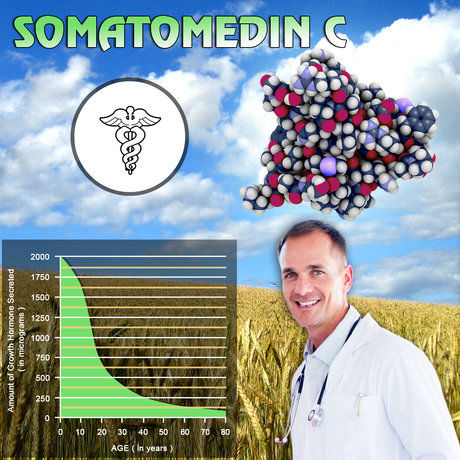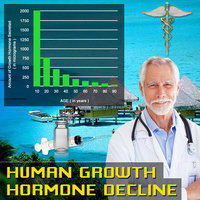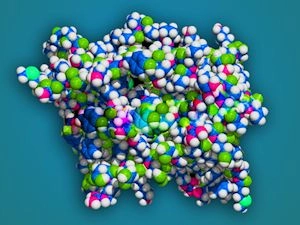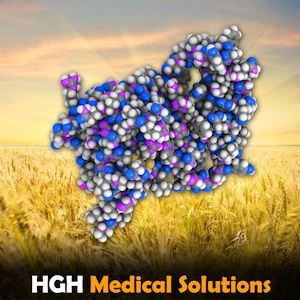Introduction
Prostate health remains a critical concern for American men, with prostate cancer being one of the most prevalent cancers in the United States. Recent studies have begun to explore the potential benefits of physical activity on prostate health, suggesting that regular exercise could play a significant role in reducing the risk and improving outcomes of prostate-related conditions. This article delves into the findings of a meta-analysis that examines the protective effects of exercise on prostate health, offering insights and recommendations for American men.
The Prevalence of Prostate Issues in American Men
Prostate-related conditions, including benign prostatic hyperplasia (BPH) and prostate cancer, are significant health concerns for American men. According to the American Cancer Society, prostate cancer is the second most common cancer among men in the United States, with approximately one in eight men being diagnosed with the disease during their lifetime. BPH, a non-cancerous enlargement of the prostate, also affects a large number of men as they age, leading to urinary symptoms and decreased quality of life.
The Role of Physical Activity in Prostate Health
Emerging research has highlighted the potential benefits of physical activity in mitigating the risk and progression of prostate-related conditions. A recent meta-analysis compiled data from multiple studies to assess the impact of exercise on prostate health. The analysis included studies that measured various forms of physical activity, such as aerobic exercise, resistance training, and overall physical activity levels, in relation to prostate cancer incidence, progression, and BPH symptoms.
Findings from the Meta-Analysis
The meta-analysis revealed compelling evidence supporting the protective effects of exercise on prostate health. Men who engaged in regular physical activity demonstrated a lower risk of developing prostate cancer compared to those who were sedentary. Specifically, the analysis found that moderate to vigorous physical activity was associated with a 10-20% reduced risk of prostate cancer. Furthermore, among men diagnosed with prostate cancer, those who maintained an active lifestyle had better prognosis and lower rates of disease progression.
In addition to cancer prevention, the meta-analysis also explored the impact of exercise on BPH. The findings indicated that regular physical activity was linked to a reduction in BPH symptoms, such as urinary frequency and urgency. This suggests that exercise may help alleviate the discomfort associated with an enlarged prostate, improving overall quality of life.
Mechanisms Behind the Protective Effects
Several mechanisms may explain the beneficial effects of exercise on prostate health. Physical activity is known to improve overall immune function, which can help the body fight off cancer cells. Additionally, exercise can help regulate hormone levels, including testosterone, which is implicated in prostate growth and cancer development. Furthermore, regular physical activity can reduce inflammation and oxidative stress, both of which are linked to the development and progression of prostate-related conditions.
Recommendations for American Men
Based on the findings of the meta-analysis, American men are encouraged to incorporate regular physical activity into their daily routines. The American Heart Association recommends at least 150 minutes of moderate-intensity aerobic activity or 75 minutes of vigorous activity per week, along with muscle-strengthening exercises at least two days per week. By adhering to these guidelines, men can not only improve their overall health but also potentially reduce their risk of prostate-related issues.
Conclusion
The meta-analysis provides strong evidence supporting the protective role of physical activity in prostate health among American men. Regular exercise can significantly reduce the risk of prostate cancer and alleviate symptoms of BPH, offering a non-invasive and accessible approach to improving prostate health. As such, American men are encouraged to prioritize physical activity as part of a comprehensive strategy to maintain prostate health and overall well-being.
Contact Us For A Fast And Professional Response

- Prostate Health in Aging Men: Understanding Changes and Managing Care [Last Updated On: March 13th, 2025] [Originally Added On: March 13th, 2025]
- Exercise: A Key to Enhancing Prostate Health in American Males [Last Updated On: March 17th, 2025] [Originally Added On: March 17th, 2025]
- Prostate Health: Diet, Exercise, Screening, and Lifestyle for American Men's Well-being [Last Updated On: March 19th, 2025] [Originally Added On: March 19th, 2025]
- Prostate Cancer Screening: Debates, Guidelines, and Personalized Recommendations for American Men [Last Updated On: March 20th, 2025] [Originally Added On: March 20th, 2025]
- Prostate Cancer's Psychological Impact on American Men: A Holistic Care Approach [Last Updated On: March 20th, 2025] [Originally Added On: March 20th, 2025]
- Dietary Strategies for Enhancing Prostate Health in American Men [Last Updated On: March 20th, 2025] [Originally Added On: March 20th, 2025]
- Navigating Prostate Cancer Survivorship: A Comprehensive Guide for American Men [Last Updated On: March 20th, 2025] [Originally Added On: March 20th, 2025]
- Prostate and Heart Health: Understanding the Link and Holistic Prevention Strategies [Last Updated On: March 21st, 2025] [Originally Added On: March 21st, 2025]
- Family History's Role in Prostate Health and Cancer Prevention Strategies [Last Updated On: March 21st, 2025] [Originally Added On: March 21st, 2025]
- Understanding Benign Prostatic Hyperplasia: Symptoms, Diagnosis, and Management in American Men [Last Updated On: March 22nd, 2025] [Originally Added On: March 22nd, 2025]
- Stress Impact on Prostate Health: Management Strategies for American Men [Last Updated On: March 22nd, 2025] [Originally Added On: March 22nd, 2025]
- Prostate Cancer: Understanding Treatments and Managing Side Effects in American Men [Last Updated On: March 22nd, 2025] [Originally Added On: March 22nd, 2025]
- Exercise Benefits for Prostate Health: A Guide for American Men [Last Updated On: March 22nd, 2025] [Originally Added On: March 22nd, 2025]
- Prostate Health: Understanding Symptoms, Seeking Care, and Preventive Measures for American Men [Last Updated On: March 23rd, 2025] [Originally Added On: March 23rd, 2025]
- Chemotherapy's Role and Impact on American Men with Prostate Cancer [Last Updated On: March 23rd, 2025] [Originally Added On: March 23rd, 2025]
- Environmental Factors and Prostate Health: Risks and Mitigation Strategies for American Males [Last Updated On: March 23rd, 2025] [Originally Added On: March 23rd, 2025]
- Radiation Therapy: A Key Strategy in Managing Prostate Cancer in American Males [Last Updated On: March 23rd, 2025] [Originally Added On: March 23rd, 2025]
- Prostate Cancer and Cryotherapy: A Minimally Invasive Treatment Option for American Men [Last Updated On: March 23rd, 2025] [Originally Added On: March 23rd, 2025]
- Prostate and Bone Health: Critical Links and Holistic Management for American Men [Last Updated On: March 24th, 2025] [Originally Added On: March 24th, 2025]
- Heavy Metals' Impact on Prostate Health: Cadmium, Lead, Arsenic Risks and Prevention [Last Updated On: March 24th, 2025] [Originally Added On: March 24th, 2025]
- Hydration's Vital Role in Prostate Health for American Males [Last Updated On: March 24th, 2025] [Originally Added On: March 24th, 2025]
- Prostate Health: Foods to Avoid for American Men's Well-being [Last Updated On: March 24th, 2025] [Originally Added On: March 24th, 2025]
- Immunotherapy: A New Hope in Prostate Cancer Treatment for American Men [Last Updated On: March 24th, 2025] [Originally Added On: March 24th, 2025]
- Prostate Cancer's Impact on Fertility: Preservation and Management Strategies [Last Updated On: March 24th, 2025] [Originally Added On: March 24th, 2025]
- HIFU: A Minimally Invasive Hope for Prostate Cancer Treatment [Last Updated On: March 24th, 2025] [Originally Added On: March 24th, 2025]
- Alcohol Consumption and Prostate Health: Risks, Mechanisms, and Recommendations for American Men [Last Updated On: March 25th, 2025] [Originally Added On: March 25th, 2025]
- Hormone Therapy in Prostate Cancer: Mechanisms, Benefits, and Management for American Men [Last Updated On: March 25th, 2025] [Originally Added On: March 25th, 2025]
- Vitamin D's Impact on Prostate Health: Insights and Strategies for American Males [Last Updated On: March 25th, 2025] [Originally Added On: March 25th, 2025]
- Prostate Health and Sleep Quality: A Vital Connection for American Men [Last Updated On: March 25th, 2025] [Originally Added On: March 25th, 2025]
- Prostate Cancer Treatment: Understanding Brachytherapy's Benefits and Applications [Last Updated On: March 25th, 2025] [Originally Added On: March 25th, 2025]
- Prostate Cancer and Palliative Care: Enhancing Quality of Life for American Men [Last Updated On: March 25th, 2025] [Originally Added On: March 25th, 2025]
- Green Tea: A Natural Remedy for Prostate Health in American Males [Last Updated On: March 25th, 2025] [Originally Added On: March 25th, 2025]
- Antioxidants: Key to Prostate Health and Cancer Prevention in American Males [Last Updated On: March 25th, 2025] [Originally Added On: March 25th, 2025]
- Lycopene's Role in Enhancing Prostate Health: Benefits and Dietary Integration [Last Updated On: March 25th, 2025] [Originally Added On: March 25th, 2025]
- Targeted Therapy Advances in Prostate Cancer Treatment for American Men [Last Updated On: March 25th, 2025] [Originally Added On: March 25th, 2025]
- Chronic Inflammation's Impact on Prostate Health: Causes, Risks, and Management Strategies [Last Updated On: March 25th, 2025] [Originally Added On: March 25th, 2025]
- Active Surveillance: A Key Strategy for Managing Low-Risk Prostate Cancer in American Men [Last Updated On: March 26th, 2025] [Originally Added On: March 26th, 2025]
- Air Pollution's Impact on Prostate Health: Risks, Mechanisms, and Prevention Strategies [Last Updated On: March 26th, 2025] [Originally Added On: March 26th, 2025]
- Support Groups: Enhancing Prostate Cancer Management and Well-being [Last Updated On: March 26th, 2025] [Originally Added On: March 26th, 2025]
- CyberKnife: A Non-Invasive Option for Prostate Cancer Treatment in American Men [Last Updated On: March 26th, 2025] [Originally Added On: March 26th, 2025]
- Prostate Cancer Stages, Grades, and Treatment Options for American Men [Last Updated On: March 26th, 2025] [Originally Added On: March 26th, 2025]
- Plastics and Prostate Health: Risks, Research, and Mitigation Strategies [Last Updated On: March 26th, 2025] [Originally Added On: March 26th, 2025]
- Omega-3 Fatty Acids: A Promising Approach to Prostate Health in American Males [Last Updated On: March 26th, 2025] [Originally Added On: March 26th, 2025]
- Selenium's Role in Prostate Health: Benefits and Dietary Sources [Last Updated On: March 27th, 2025] [Originally Added On: March 27th, 2025]
- Photodynamic Therapy: A Promising Approach for Prostate Cancer Treatment in American Men [Last Updated On: March 27th, 2025] [Originally Added On: March 27th, 2025]
- Vitamin E's Role in Prostate Health: Benefits, Risks, and Dietary Sources [Last Updated On: March 27th, 2025] [Originally Added On: March 27th, 2025]
- Proton Therapy: A Precise Approach to Treating Prostate Cancer in American Men [Last Updated On: March 28th, 2025] [Originally Added On: March 28th, 2025]
- Zinc's Vital Role in Prostate Health and Cancer Prevention for American Males [Last Updated On: March 28th, 2025] [Originally Added On: March 28th, 2025]
- Prostate Cancer Management: Understanding Watchful Waiting for American Men [Last Updated On: March 28th, 2025] [Originally Added On: March 28th, 2025]
- Pesticide Exposure and Prostate Health: Risks and Prevention for American Males [Last Updated On: March 28th, 2025] [Originally Added On: March 28th, 2025]
- Prostate Cancer Surgery: Benefits, Risks, and Recovery for American Men [Last Updated On: March 29th, 2025] [Originally Added On: March 29th, 2025]
- Chemoprevention Strategies for Prostate Cancer: Agents and Implementation [Last Updated On: March 29th, 2025] [Originally Added On: March 29th, 2025]
- EMFs and Prostate Health: Insights and Guidance for American Males [Last Updated On: March 30th, 2025] [Originally Added On: March 30th, 2025]
- Robotic Surgery: A Minimally Invasive Option for Prostate Cancer Treatment [Last Updated On: April 2nd, 2025] [Originally Added On: April 2nd, 2025]
- Focal Therapy: A Promising Approach to Prostate Cancer Treatment in American Men [Last Updated On: April 2nd, 2025] [Originally Added On: April 2nd, 2025]
- Cruciferous Vegetables: Enhancing Prostate Health in American Males [Last Updated On: April 2nd, 2025] [Originally Added On: April 2nd, 2025]
- Laparoscopic Surgery for Prostate Cancer: Benefits, Risks, and Recovery Insights [Last Updated On: April 6th, 2025] [Originally Added On: April 6th, 2025]
- Prostate Cancer Recurrence: Understanding and Utilizing Salvage Therapy Options [Last Updated On: April 6th, 2025] [Originally Added On: April 6th, 2025]
- Endocrine Disruptors and Prostate Health: Risks and Mitigation Strategies for American Males [Last Updated On: April 7th, 2025] [Originally Added On: April 7th, 2025]
- Industrial Chemicals and Prostate Health: Risks, Mechanisms, and Prevention Strategies [Last Updated On: April 8th, 2025] [Originally Added On: April 8th, 2025]
- Neoadjuvant Therapy: Enhancing Prostate Cancer Management in American Men [Last Updated On: April 9th, 2025] [Originally Added On: April 9th, 2025]
- Prostate Cancer in American Men: Understanding Adjuvant Therapy Options and Impacts [Last Updated On: April 9th, 2025] [Originally Added On: April 9th, 2025]
- Flaxseed: A Natural Approach to Enhancing Prostate Health in American Males [Last Updated On: April 10th, 2025] [Originally Added On: April 10th, 2025]
- Soy Isoflavones: A Dietary Approach to Enhancing Prostate Health in American Males [Last Updated On: April 10th, 2025] [Originally Added On: April 10th, 2025]
- Palliative Surgery in Prostate Cancer: Enhancing Quality of Life for American Men [Last Updated On: April 10th, 2025] [Originally Added On: April 10th, 2025]
- Prostate Health in American Males: Pharmaceuticals, Side Effects, and Holistic Management [Last Updated On: April 12th, 2025] [Originally Added On: April 12th, 2025]
- Prostate Cancer and Bone Health: The Critical Role of Bisphosphonates [Last Updated On: April 12th, 2025] [Originally Added On: April 12th, 2025]
- Pomegranate's Role in Enhancing Prostate Health: Benefits and Dietary Integration [Last Updated On: April 13th, 2025] [Originally Added On: April 13th, 2025]
- Enzalutamide: Advancing Prostate Cancer Treatment and Outcomes in American Men [Last Updated On: April 16th, 2025] [Originally Added On: April 16th, 2025]
- Prostate Health Challenges and Strategies for Long-Haul Truckers [Last Updated On: April 16th, 2025] [Originally Added On: April 16th, 2025]
- Radium-223: A Targeted Therapy for Metastatic Prostate Cancer in American Men [Last Updated On: April 16th, 2025] [Originally Added On: April 16th, 2025]
- Heavy Physical Work's Impact on Prostate Health in American Males [Last Updated On: April 17th, 2025] [Originally Added On: April 17th, 2025]
- Shift Work's Impact on Prostate Health: Risks and Mitigation Strategies for American Males [Last Updated On: April 18th, 2025] [Originally Added On: April 18th, 2025]
- Abiraterone: A Key Treatment for Metastatic Prostate Cancer in American Men [Last Updated On: April 18th, 2025] [Originally Added On: April 18th, 2025]
- Turmeric's Role in Enhancing Prostate Health: Benefits and Usage Guide [Last Updated On: April 18th, 2025] [Originally Added On: April 18th, 2025]
- Denosumab's Role in Managing Advanced Prostate Cancer in American Men [Last Updated On: April 18th, 2025] [Originally Added On: April 18th, 2025]
- RANK Ligand Inhibitors: A New Hope in Prostate Cancer Bone Metastasis Treatment [Last Updated On: April 19th, 2025] [Originally Added On: April 19th, 2025]
- Ginger's Role in Enhancing Prostate Health: A Holistic Approach [Last Updated On: April 19th, 2025] [Originally Added On: April 19th, 2025]
- Obesity's Impact on Prostate Health: A 15-Year Epidemiological Review [Last Updated On: April 22nd, 2025] [Originally Added On: April 22nd, 2025]
- Apalutamide: A New Hope in Prostate Cancer Treatment for American Men [Last Updated On: April 22nd, 2025] [Originally Added On: April 22nd, 2025]
















